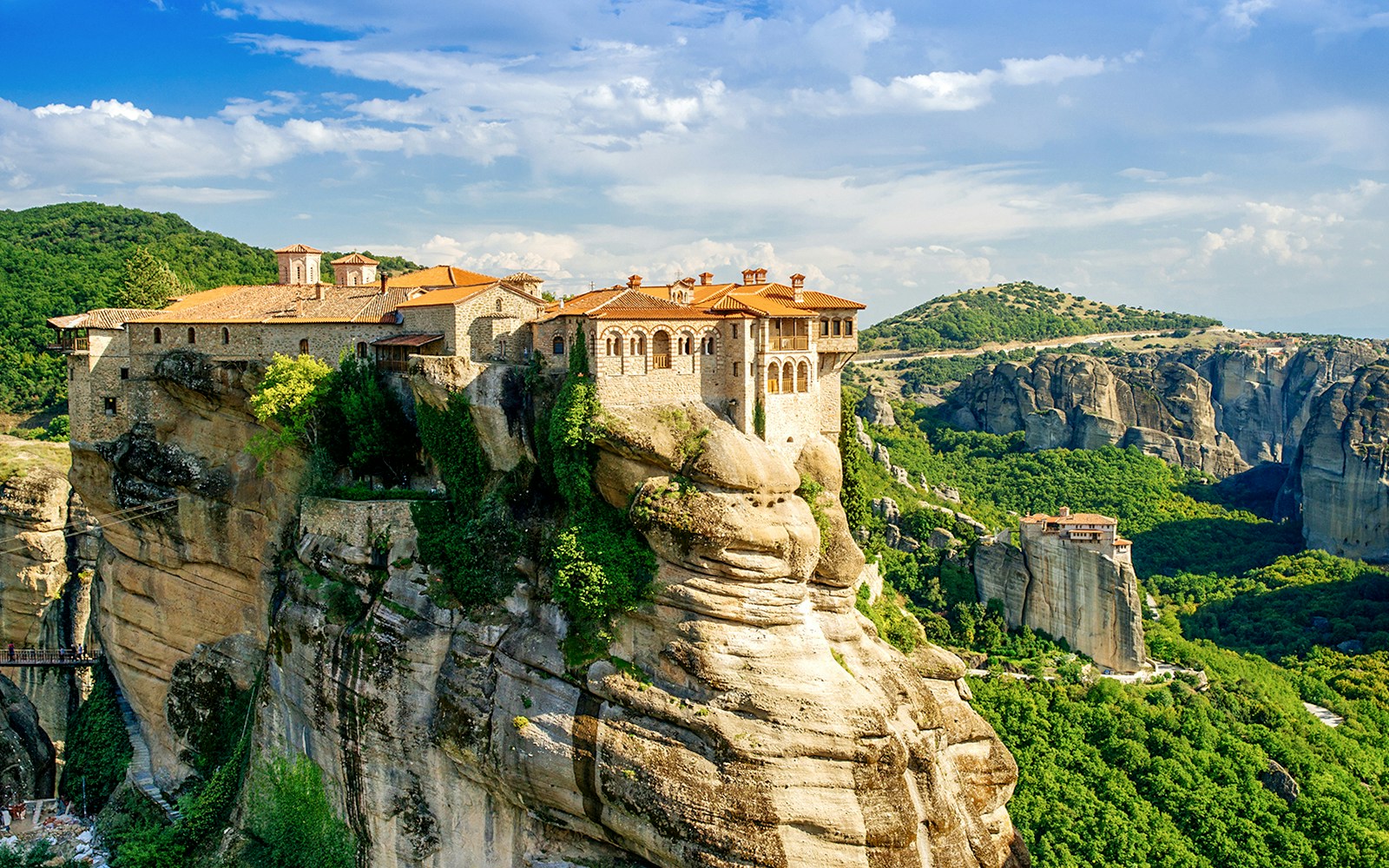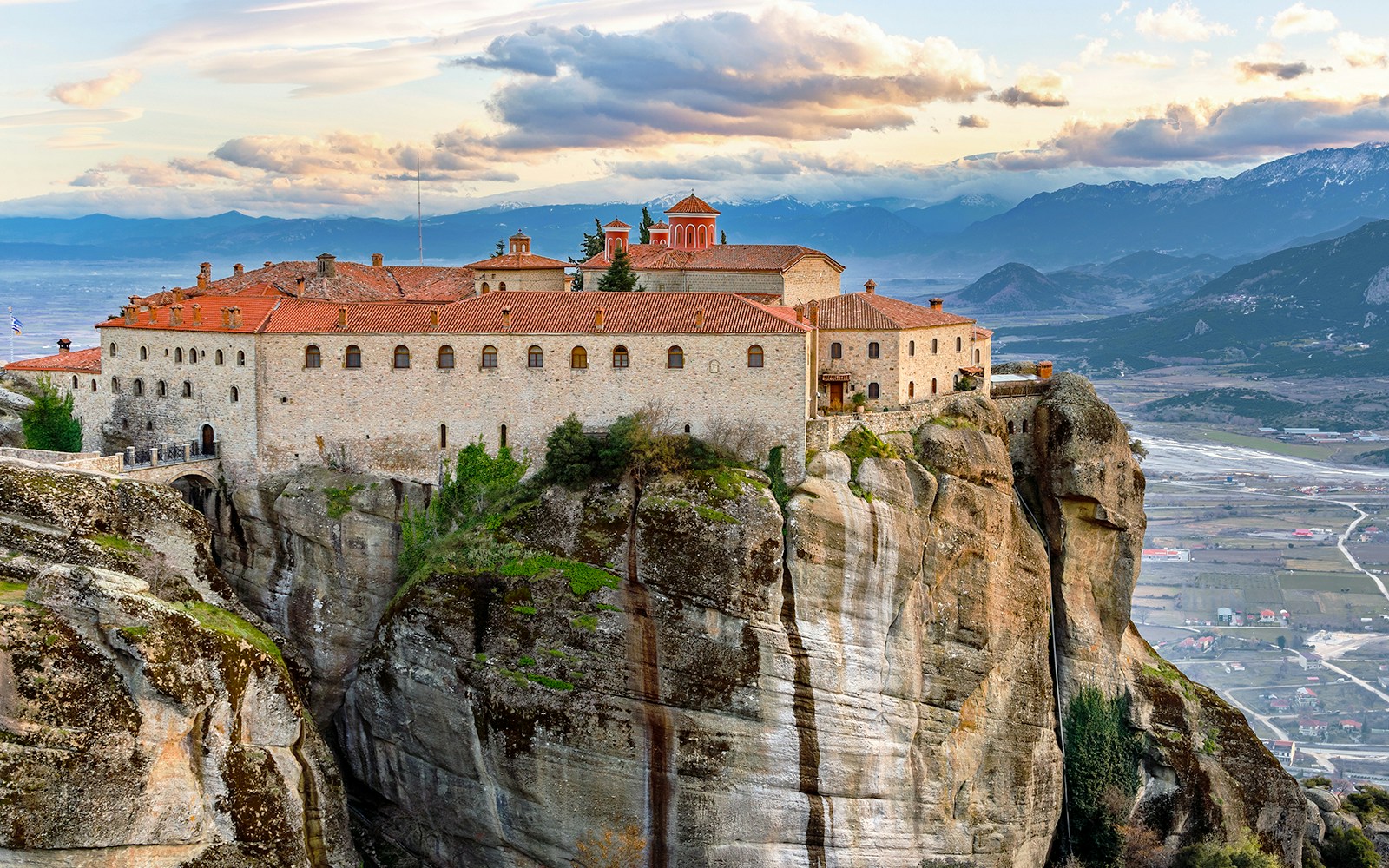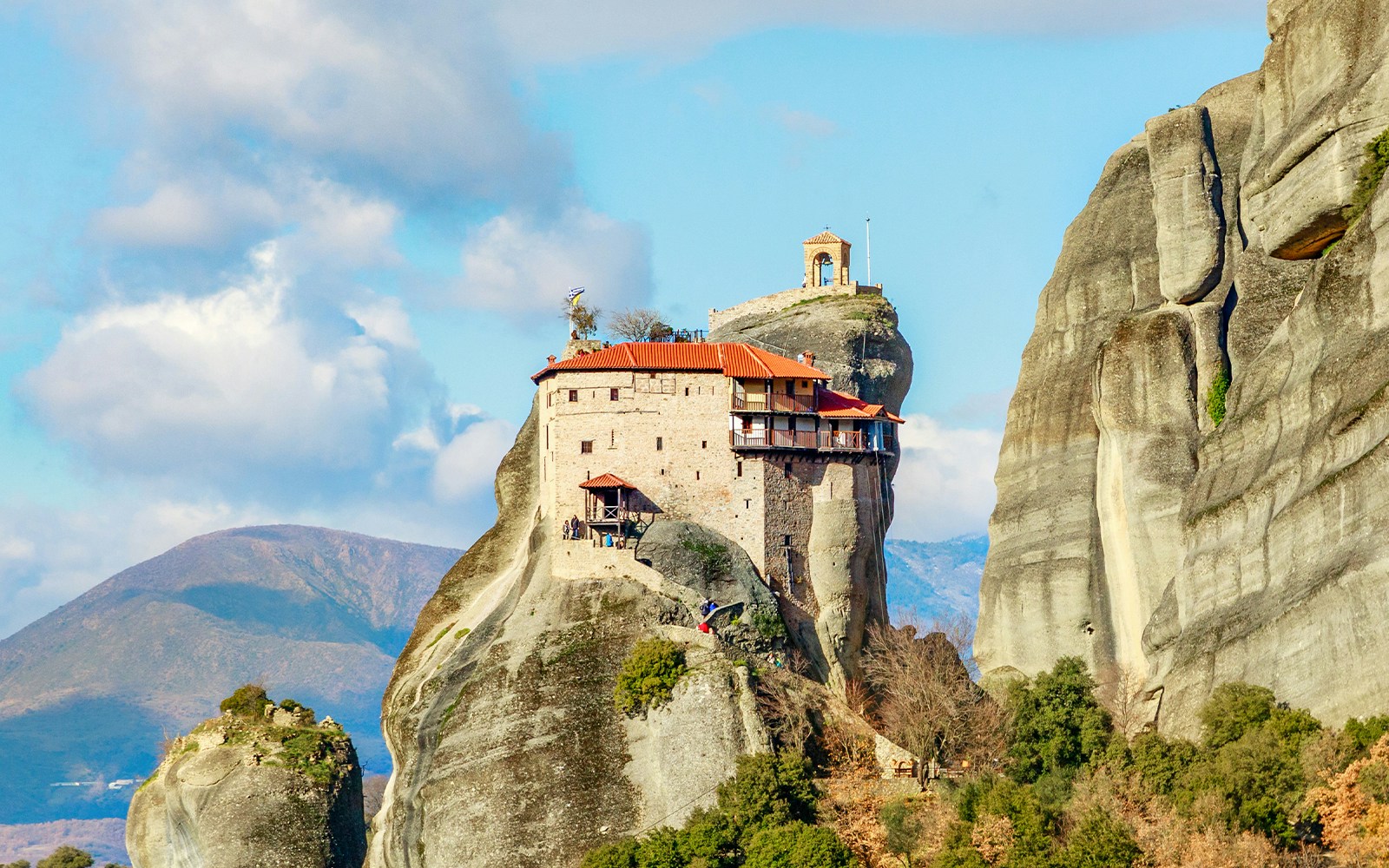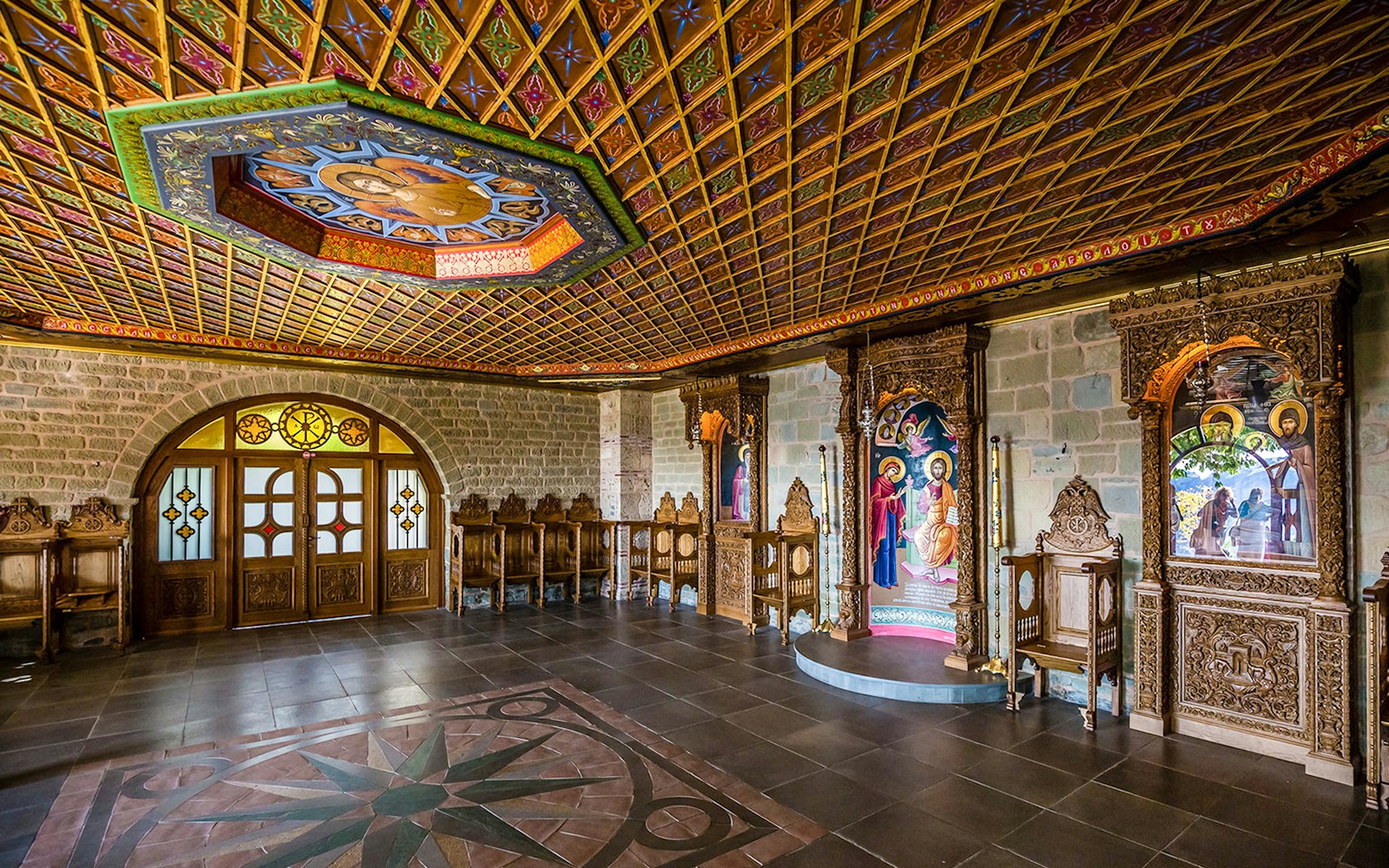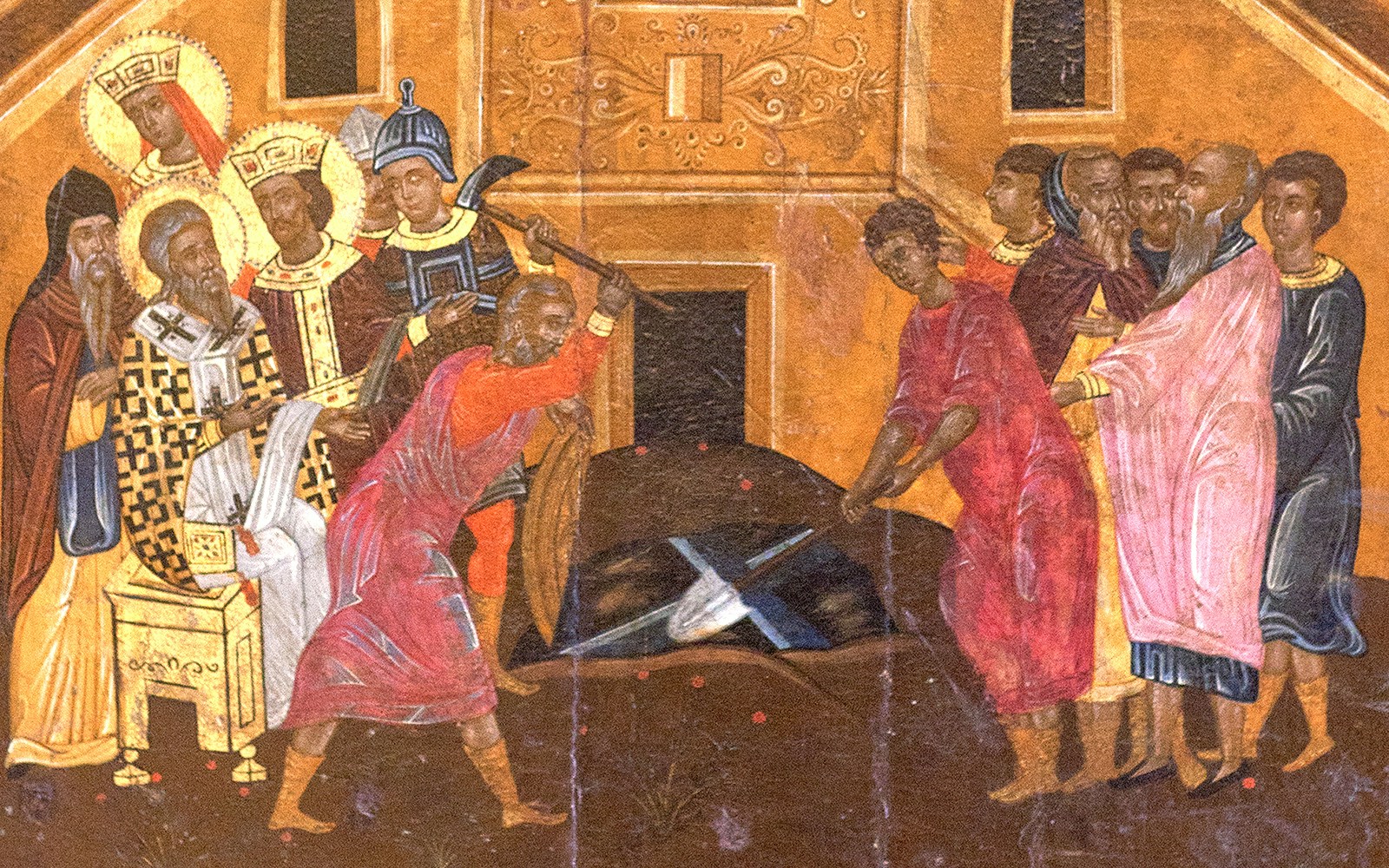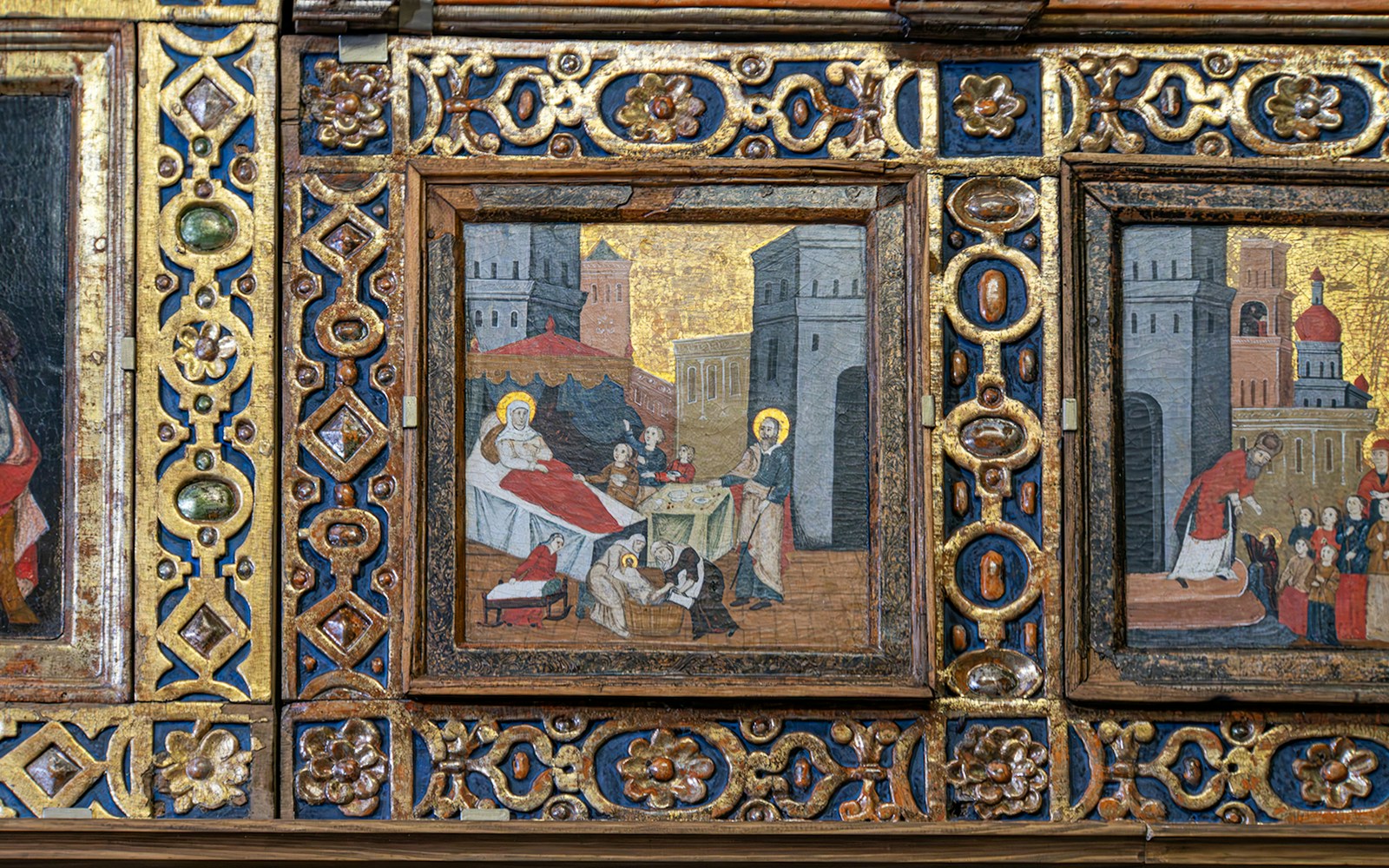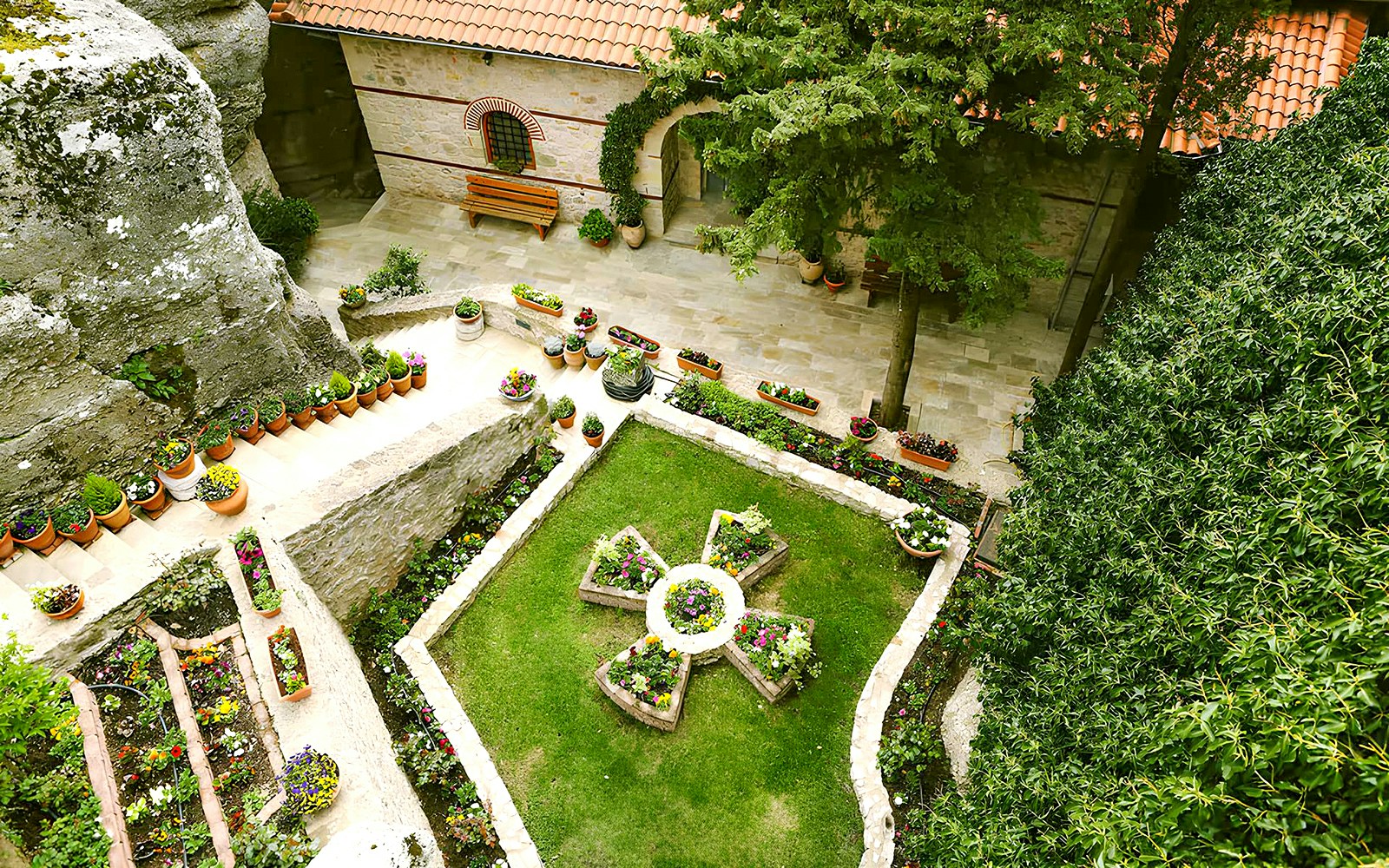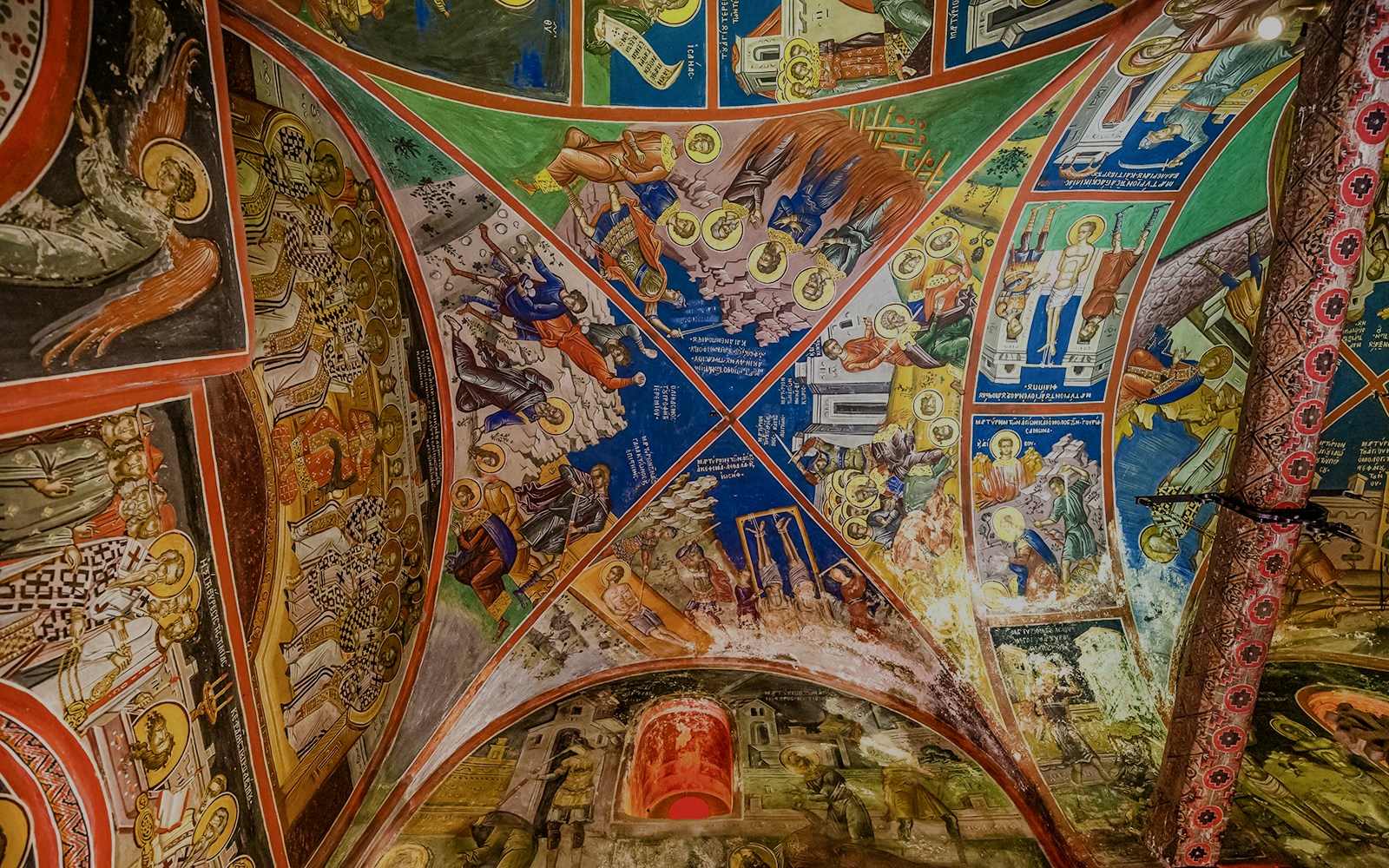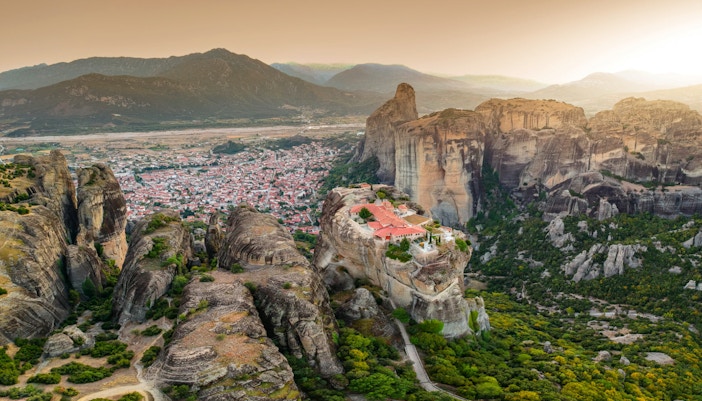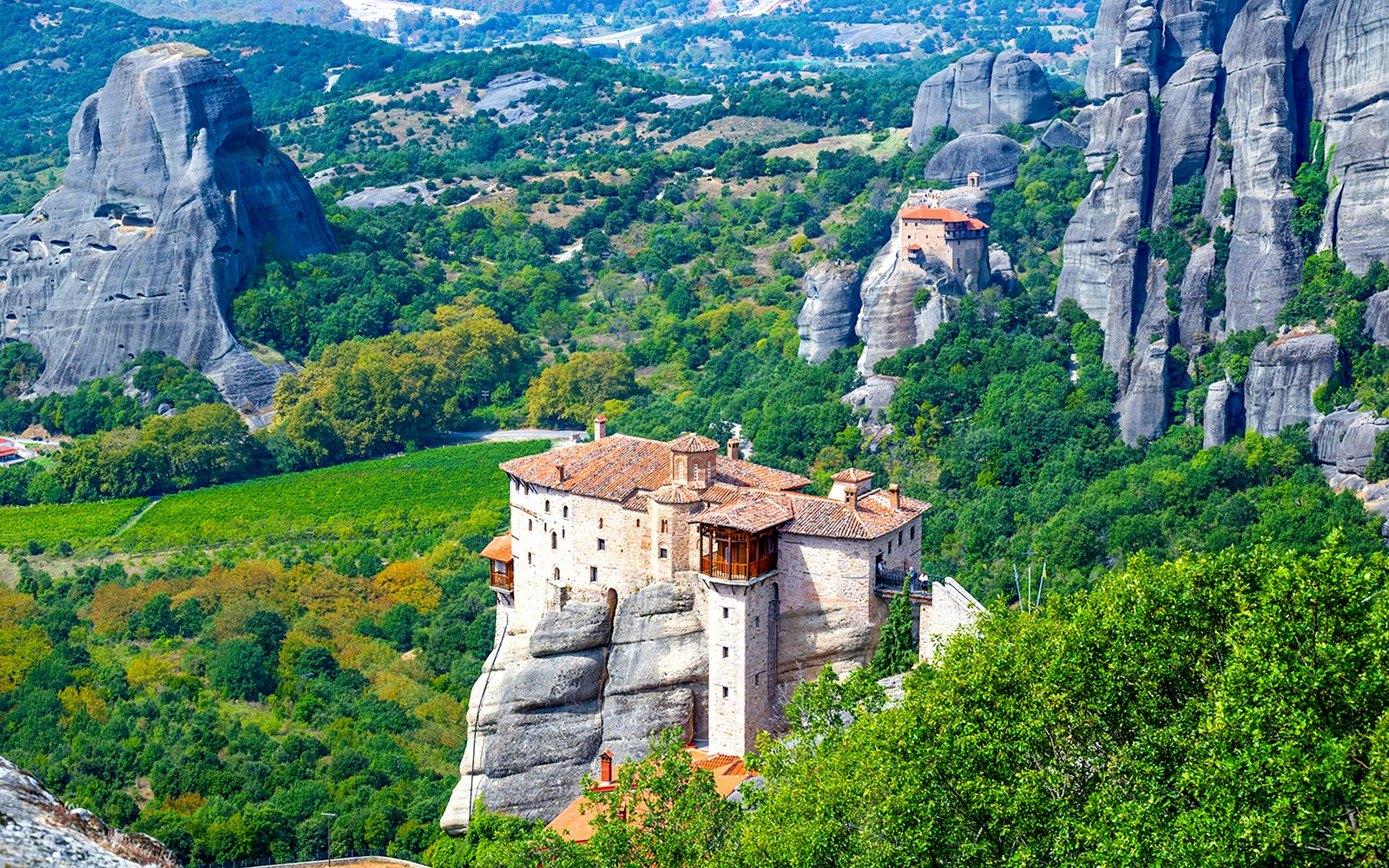Why the Monastery of Rousanou is a must-see in Meteora
Convent hospitality
Since the 1980s, Rousanou has been cared for by a community of nuns, giving it a warmth you won’t always find in the larger monasteries. As you wander through, you notice flowerpots brightening the windows and gardens lovingly kept, details that make your visit feel personal and inviting.
Easy access
Unlike some of the more remote monasteries in Meteora, Rousanou is relatively easy to reach, with fewer steps and a shorter walking path, an ideal stop for those wanting stunning views of the surrounding rock pillars without a strenuous climb.
Natural harmony
Built slightly lower than the other monasteries, Rousanou feels more integrated into the surrounding greenery. From its balconies, you hear birdsong, see orchards and wildflowers below, and get a sense that the monastery blends seamlessly into the valley’s ecosystem.
Symbol of resilience
During World War II, Rousanou was heavily damaged and looted, but it was painstakingly restored in the decades after. Its revival as one of the most visited monasteries today is a testament to the endurance of Meteora’s spiritual communities.
